Perhaps the most unusual film playing at FrightFest 2018 is Sam Ashurst’s singular directorial debut, Frankenstein’s Creature. Based on a one-man play by the film’s star James Swanton, it is a breathtaking experience.
Set in the ruins of an unnamed house and shot in a single, fixed take, this is the Frankenstein story as told exclusively from the Creature’s point of view.
Ashurst was good enough to give up a chunk of one Saturday afternoon to discuss his memorable creation. Being a working film critic, this meant a conversation steeped in movie knowledge. And if you like the below, we recommend you check out the Arrow Video podcast the director co-hosts with special effects artist Dan Martin.
It was a lengthy, rewarding conversation, ranging from the practicalities of shooting low budget, including securing locations and talents, to the cinematic influences on the film and what Ashurst hopes audiences will take from it.
In Frankenstein, Mary Shelley wrote, “Nothing is so painful to the human mind as a great and sudden change”. Therefore, let us ease ourselves in…
BEGINNINGS
Rob Daniel: Could you give me a bit of bio?
Sam Ashurst: I worked as a film journalist for about 10 years. I’m a cinephile and have been all my life. I got into film journalism the long way around.
I did this crazy Avant Garde art course called Performance Writing at Dartington College of Arts. In an early lesson, the lecturer asked us all to name different kinds of writing. One person said ‘typewriting’, and he said, ‘yeah, that’s great, thanks’. Another person said, ‘writing your name with a stick in the sand.’ Again he said, ‘yeah, that’s great, thanks.’
Then someone said, ‘you know when a ghost comes through the wall and leaves behind its ectoplasm, that’s a kind of writing, isn’t it?’ And the lecturer again said, ‘yeah, that’s great, thanks.’ The same level response to every answer. So that was the kind of mind-expanding place I went to.
But, it did expand my mind. As it was an Avant Garde art college you could be experimental and find your own way. I ended up getting into doing weird little films and stuff. I graduated, and my degree was good enough to get me a job at the cinema I worked at before going to college!
I then moved to Scotland and worked in a comic-book store while living with my partner at the time. I was creatively frustrated, so she asked me what would make me happy. At that time I wanted to write, so she said we’d find a course that would enable me to do that at a professional level and she’d support me.
RD: Wow…
SA: Yeah, she changed my life. I was able to enroll on an NCTJ journalism course at Cardonald College in Glasgow. While there I did work experience placements at SFX, Total Film, and DVD Review.
I wrote so many reviews for that first issue of DVD Review they ended up keeping me. Then on to Total Film and I went freelance in 2014. After a couple of years of freelancing, and interviewing my heroes, people like Paul Thomas Anderson and Ridley Scott, I decided to make a short film because I had the time.
My first short was Hell’s Garden and basically I did it to see if I could. It was shot in three hours in the house I was then living in. I used to do stand-up for a bit, as a horror character, and on the circuit met Nick Helm, who is a really good actor. He agreed to do my short.
RD: Didn’t it also win an award at FrightFest?
SA: Yeah, I showed it to people and they said I should submit it to FrightFest. It got in and we won the Total Film’s FrightFest Award for Best Scare, which in itself was a surreal journey.
RD: I looked for it, but it’s not online is it?
SA: It’s not, no. At the time I said, come and see it at FrightFest because I’ll never put it online. I love streaming services, it’s a good place for indies to find their home. There is one indie streaming service where if they wanted to host the short, I probably would let them.
But, outside of that, the impact of the short is so much more on a big screen with an audience. It would be diminished on YouTube, and what would I be getting out of that? Or the people watching it really?
When I think about it, it’s so weird how everything came about. In 2017 Arrow did a screening of The Ghoul, and this was around the time we were starting the podcast. The screening had a Q&A hosted by Catherine Bray that was basically “How to make a film for under ten grand”.
Catherine had heard about the short and is commissioning editor for Channel 4’s Random Acts. She asked me if I had anything to pitch for the show and I have a musician friend who goes by Depresstival who had written a ballad about Terminator 2. I pitched the idea of doing a music video for that song.
Catherine gave me a small budget and said it might make it on telly but will probably go on the YouTube channel. They commission hundreds of these videos and 28 will reach TV. But, looking at the YouTube channel, I thought it would be great to be amongst the amazing filmmakers who were there.
Then it ended up being shown on Channel 4, which was a great feeling. It broadcast the same night The Last Jedi opened in the UK, which was pretty weird – my music video, competing with Star Wars!
While I was shooting the video, the budget was so small I thought I could probably raise that kind of money independently. And with everyone around me to crew a film, I wondered if I could make a feature film in a single day.
That idea stayed with me and later I was talking to Dan (Martin) as we were about to do an audio commentary for The Villainess.
Dan told me a piece of advice he was given long ago: if you want to make a film in a short space of time adapt a play. The actors know what they’re doing, there aren’t many locations and you can tell the narrative in a short space of time. That seemed genius to me.
Skipping back slightly, I had actually written a feature script called The Devil’s Patient. The short I made was partly to show that I had a vision, could handle a crew and do scary. I got signed to The Film Label off the back of the script and shot a teaser trailer for them to raise investment.
I worked with James Swanton on that teaser and discovered he had written and performed a one-man play called Frankenstein’s Creature. I searched images on Google and thought it looked incredible.
I asked James to send me his script and also if he’d be up for me adapting it into a film.
[su_youtube url=”https://www.youtube.com/watch?v=MK2wQmcp3Hg”]
CREATION
RD: You didn’t see the play on its original run?
SA: No, which I think enabled me to have my own vision of it. It’s an astonishing piece of art. On my first read it felt like Rutger Hauer’s speech at the end of Blade Runner, but… much longer!
RD: The location is striking, where did you shoot?
SA: It’s a place called Peckham Asylum. It’s not an asylum but rather a broken-down church that now does weddings and parties. I actually know people who went to weddings there.
We got lucky there as well. It was a perfect location, but the cost of renting the space for a day was a significant chunk of my budget. I emailed them asking if there was any way we could do this on a discount.
They replied saying they loved supporting filmmakers and projects like this and gave me an incredibly reduced rate. It was the same amount I paid to rent the space for the music video, so it felt like things clicking together.
RD: Did you still have to dress the location?
SA: We basically lit it to make it look more sinister than it is in real life to get the atmosphere the film needed.
RD: So, you have one day to shoot the film at Peckham Asylum. How much rehearsal time did you give yourself with James and how did you use it?
SA: We did a week’s rehearsal in my living room. So, I was lucky because I got to see the play two or three times a day. I’d tweak the blocking and make suggestions on what I wanted James to do.
I don’t want to give too much away, but for one specific sequence, I told James I wanted his face to go on a journey, starting here, travelling across this emotional range and ending over there. Three very specific moods. And honestly it was like watching a cloud pass over the moon, so perfect and powerful.
I was asking him to do this here and that there and because of me he would occasionally forget a line. That’s normal, that’s what rehearsals are for, but we were like both a little worried, like… shit. Can we do the full play in one take? It’s a lot to ask.
RD: Were you asking him to do something markedly different to what he did on stage?
SA: Not markedly, I’d say it’s a faithful adaptation of the play. But, I was asking him to incorporate changes into something he had done many times. Plus, it was a completely different setting. He was used to a whole stage, so there was a lot of extra co-ordination and thought we had to do to bring it into a smaller space.
We’d rehearse through the day, then in the evening I’d make him dinner and we’d watch movies related to how I saw our film, that were relevant to performance. I showed him Possession which he found intense, and There Will Be Blood. To me those are both horror films with theatrical performances at their heart. I wanted him to see how you could dial up a performance and still make it cinematic.
If you follow James on social media – and you should – you’ll see that for him cinema ended in 1940. He’s very much 20s and 30s…
RD: Interesting you say that. When watching Frankenstein’s Creature I was thinking Conrad Veidt in The Cabinet of Dr. Caligari, plus Nosferatu and the theatricality of German Expressionist horror cinema.
SA: One hundred percent. Right, I’m going to give you the keys to the kingdom now and break down exactly what it was. I’ve alluded to this, but I don’t think people have quite got their heads around what we tried to do, so I’ll be explicit.
We filmed it on the 200th anniversary of the publication of the Frankenstein novel. James and I both love German Expressionism. And, because this is my first film I wanted this to look like the first ever film.
At the dawn of cinema you had the Lumiere Brothers and Georges Méliès. The Lumieres would put down a camera and film stuff: the train arriving at the station, the people leaving a factory and so on. Méliès was on the fantasy side of the spectrum and did lots of in-camera tricks.
I was thinking what if this specific film, Frankenstein’s Creature, was somehow made 200 years ago? So, I wanted to combine those two pioneers in one film. You have the fixed camera recording an event unfold, but also dissolves to different imagery, and the split screen stuff, to introduce an element of magic.
And what James does is like a magic trick. For 90 minutes through voice and physicality alone he takes everyone on a journey, through different moods, atmospheres and characters, all while inhabiting a single character.
Around a third of the films in the earliest days of cinema were either inspired by theatre or tried to replicate it – so this is what a feature film adaptation of Shelley’s novel would have looked like back then.
And German Expressionism is where cinematic horror and sci-fi spring from and Frankenstein birthed the modern horror and sci-fi novel. Therefore, mixing all those elements felt right. And cinematic… admittedly cinema as it might have looked 200 years ago. If Eisenstein saw Frankenstein’s Creature, he might not think it’s a movie…!
RD: So, you set out to make the first ever film for your first film. That’s a lofty ambition for a debuting director!
SA: I also wanted to make something that would feel like poetic cinema, that would feel remodernist. I wanted to make something that if I only make seven films say, this could fit into that filmography.
RD: The FrightFest programme calls Frankenstein’s Creature a blend of theatre and cinema. But, although it’s a fixed camera I thought you use the frame in a similar way to Michael Haneke; it’s about depth of field and changing compositions, with subtle camera moves. How did you decide where to employ those elements when shooting?
SA: That’s a lovely question. The blocking was done in my living room as I mentioned. In terms of the cinematic techniques… I’m trying to think of a way to not spoil little moments. Okay, one of my favourite writers is a comic book author called Grant Morrison. He regards narrative as a complex structure that he’s looking at from above, and I wanted to apply that to directing Frankenstein’s Creature.
James’ writing lends itself to that. There are little turns of phrase and foreshadowing that might have taken a couple of viewings of the play for the audience to piece together. I wanted to bring those elements to life cinematically with the blocking, focussing on small things James would do that then are returned to more dramatically later in the story.
And then there are all the slow zooms – which we use to pull in the audience, or to push them away. I wanted some moments to feel like an audience leaning in for a better look, or backing away from what was happening onscreen. They’re subtle, and add to that subconscious feeling of disorientation.
RD: Of course, there is also the practical challenge of shooting the whole movie in a single take. Is what we see Take 1, Take 2?
SA: I structured the day so we would have enough time for three takes and then B-roll stuff for the half-dissolves that involved James. But, we ended up getting it on the first take and went on to B-roll.
It was a crazy day, snowing outside and freezing cold in that church. We had these two space heaters which did nothing to fill the space. You only felt the benefit if you were sat right in front of them.
So, James is barefoot on the freezing cold ground. As much as I want to push an actor to greatness, I don’t want to kill him. But, I knew on that first take we had got it. I told the crew let’s get the extras we need and then I let everyone go home a couple of hours early.
That was surreal, when I’d spent so much time thinking were we going to get that take we needed when so much could go wrong?
RD: And it was important that you captured the performance in a single take?
SA: Very much so, it’s part of the magic. Also, I see Frankenstein’s Creature as like a next level human. So it had to be in one take because that adds to what is special about this creation.
RD: We’re back to Rutger Hauer again.
SA: Exactly. Blade Runner is a Frankenstein story. Like Roy Batty, the creature is such an incredible character. Both do terrible things, but you still feel empathy and sympathy because neither had a chance. Circumstance broke them both down and created these uncontrollable things. They could have been angels, the best of all of us. More human than human!
RD: You made this film on the 200th anniversary of the book’s publication. It stars someone primarily influenced by silent cinema. You secured your location at the exact price you needed. The book is about sci-fi alchemy. Did you feel there was a strange alchemy when making the film?
SA: Completely. Without wanting to sound too pretentious, there is a Bergman quote about when you’re making a film something magical happens and you feel like you’re entering another dimension. Watching James perform this 90-minute feat felt magical.
Talking about alchemical elements, there’s a touch of that to how the score came about. I’d written something about our composer Johnny Jewel years ago and his assistant got in touch to say Johnny wanted me to know he really liked it, which was lovely.
A friend of mine called Jen Moss does music supervision at Warners on such movies as I, Tonya. I asked her how I could get cool music for Frankenstein’s Creature on my budget. Jen said get in touch with composers you like, tell them the budget and they’ll normally do it for a percentage of that. My budget of course was tiny, but Jen said be up front about that and you never know.
I still had this contact for Johnny’s assistant. I dropped him a line saying what was going on, what my budget was and received a reply saying he didn’t work for Johnny anymore, but had forwarded my email to him.
Very soon after that, within an hour, I received a reply from Johnny Jewel’s new assistant saying they loved to support things like my film and wanted to know more. Originally, I just asked for a specific song I love to open the film, Back from the Grave by Johnny’s band Chromatics.
Johnny replied saying he loved the novel and Back from the Grave was written about Frankenstein, so of course I could use it. He also asked if I’d like any supplementary music to which I quickly shot back a big yes please! Johnny then sends through an hour of music perfect for Frankenstein’s Creature.
Again, the alchemy, that ubiquitous love of Frankenstein. In the edit it was weird how certain tracks seemed written for the images. It’s almost like this film wanted to exist and we were merely helping it.
RD: Frankenstein’s Creature reminded me of the opening to Once Upon a Time in the West. You need to engage your eyes and ears. Carefully composed imagery and camerawork mesh with the sound design to create an amazing mood. When making this, presumably you knew it was going to be very much an eyes and ears film?
SA: Absolutely, and thank you for that amazing comparison. I’m probably going to say this during the FrightFest intro, but the best way I can describe this is as a trance film. I saw Panos Cosmatos’s Mandy earlier this year, the Nicolas Cage film, when we were deep in edit and realised it was going to be fine, there were filmmakers out there with a similar attitude.
The two films are very different, but both have elements you’re describing. Its imagery, its sound, its music, and we’re using those things in a way slightly off from what people expect, to create an intense mood and atmosphere that will stay with them. As the audience stumbles out hopefully we’ll have made some kind of impact!
RD: In my review I call this “Frankenstein directed by the alien from Under the Skin.” It had that effect on me while watching it, of slipping into the black goop and being taken to a strange otherworld. And, in a weird way, also being turned inside out!
SA: Firstly, I’ll be pulling that quote out. Secondly, I was lucky enough to interview the director Jonathan Glazer for over an hour about that film. That has been another element to my career, I’ve managed to speak to most of my heroes – Lynch, Cronenberg, Argento, Tarantino, PT Anderson. You take away something from all of them on how they approach directing.
RD: Recently I was speaking to Jenn Wexler about The Ranger. She said she was next producing Larry Fessenden’s new film, Depraved, which is a modern-day retelling of Frankenstein set in Brooklyn. What is it about this tale that still inspires modern cinema?
SA: Wow, that film sounds great. I think there’s an element of zeitgeist in that both Frankenstein and his creature are narcissists, and narcissism is an increasing issue around the world. We are also fascinated by the idea of setting something on a path that spirals out of control. I think we’re beginning to see that from our own actions.
There are very real monsters in our world right now, be they human beings or man’s effects on nature. Nature has turned on us.
And of course, there is also the fact this is the bicentennial and Mary Shelley’s work remains an astonishing book in its relevancy and power. It’s timeless.
RD: There are timeless feeling shots of landscapes and horses you half-dissolve to during the film. Were they filmed by you or was that licensed footage?
SA: Everything in the film is ours, there’s no stock footage. We shot the performance in one day, but filming took seven days because a documentarian friend called Jónatli Guðjónsson was returning to Iceland and I basically sent him a list of shots I needed. The cottage, the arctic wastes, the horses. I sent him clips from Andrei Rublev and said if he could get something with that feeling I’d be happy.
Jónatli shot everything, so is credited as 2nd unit director. When he came back with the footage, it was exactly what I wanted and actually went beyond my expectations.
UNBOUND
RD: Frankenstein’s Creature is playing the Cineworld Discovery Screen at FrightFest. You know the FrightFest team, so presumably you submitted it, they took a look and it went pretty well?
SA: Erm, well it did and it didn’t! I don’t know what to say about this other than I was very pleased and surprised when I received the email that it was in.
To me personally, this film is my exact taste so I love every second of it (laughs). But, I can see it requires a commitment from an audience. As we discussed you have to focus and go with it. I think people who decide to do that will have a memorable experience.
Rightly however, I think the FrightFest team wanted to make sure people wouldn’t think it was a traditional film and be disappointed.
However, we were the first film to sell out at FrightFest. Just to make it clear though, we are in the smallest screen! I don’t want to compare it to those big screens at the Cineworld Leicester Sq or the Prince Charles that are also showing FrightFest films. But, I am comparing it to the other films in the Cineworld Discovery Screen. All those films have bigger casts, i.e., more than one person, and bigger crews and marketing teams. We are a small team passionately supporting our film.
So, I was very pleased for me, James and the crew and want to thank the FrightFest guys for taking a chance with us. I’m comfortable we haven’t tricked anyone to get them in there. Like you said, the programme blurb is “Theatre comes to FrightFest!”
It’s still cinematic, but just in the way the earliest films, shot in the proscenium style, were – including the double exposure, and split screen techniques those films used.
RD: 78 lucky souls will see it at FrightFest. What are your distribution plans after that?
SA: I have two paths of thought here. One is a traditional release. The other has everyone telling me I’m mad. I can’t say too much about this, but we are talking to someone about releasing it and if it was to happen with them, it’s big.
The mad way, which everyone is saying please don’t do is… we screen it at FrightFest. Maybe have one more screening. Then we put it into a time capsule and leave instructions for it to be uploaded in a hundred years on the 300th anniversary of Frankenstein’s publication!
RD: I like the grand theatricality of that! But, I sincerely hope the former happens because I want others to see this film.
SA: I know, and of course I do too. But I’m a bit obsessed with legacy and the hundred years thing seems like a good legacy move. We’ll see.
RD: Penultimate question. I hope you go on to make a second feature and more. If you do, what can we expect from those? Is Frankenstein’s Creature the “Ashurst style”?
SA: I feel all directors make the same film over and over again, but in different ways. That is what having a voice is and what having a vision is. However, I think my voice and vision isn’t going to be “one shot filmmaking”. That was very much for this piece. We made a film called Frankenstein’s Creature, it stars Frankenstein’s creature and I wanted it to feel like we stitched different elements together to create it.
Anton Bitel’s review gets the film exactly right in that respect. Reading it was quite surreal because he was saying exactly what we set out to do. Even if, like Eisenstein, he didn’t really think it was a film! Anton’s reviews are always amazing though.
But, I’m starting to put together the next thing, which is going to be shot on film and is very different to this movie. It won’t be The Devil’s Patient, by the way. I think Devil’s Patient might be dead, because it’s so similar to Hereditary. The next thing is a new idea. What carries over from Frankenstein’s Creature will be specific cinematic influences and that element of deconstruction and reconstruction.
I think that will always be in whatever I do, that deconstruction and reconstruction.
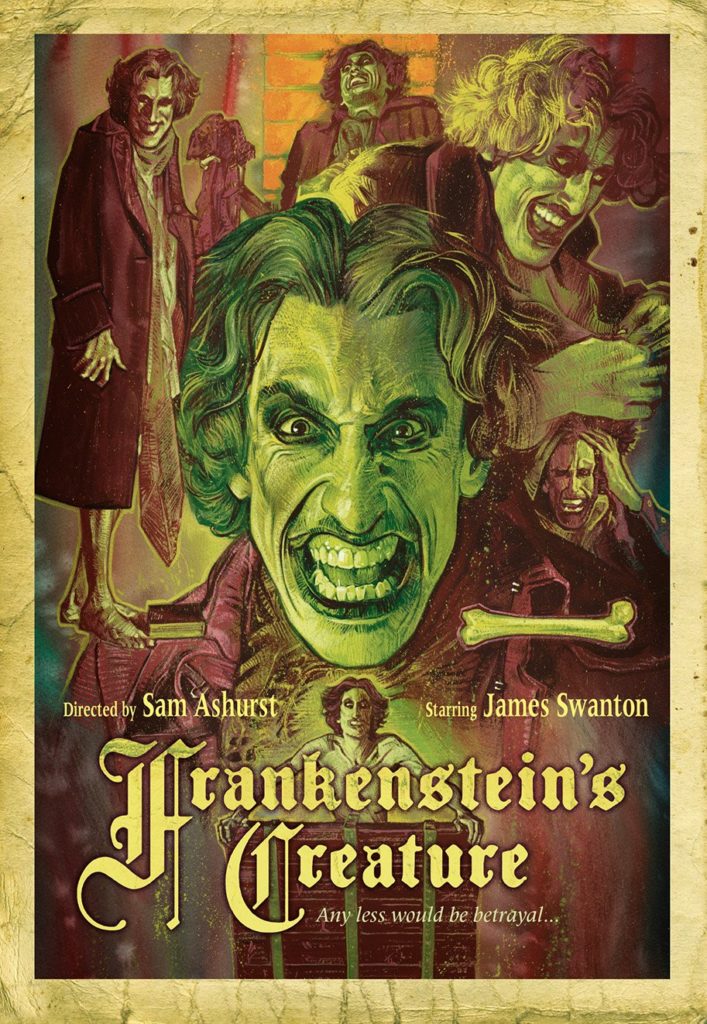 RD: Final question. I’m a huge fan of Graham Humphreys’ poster art. His iconic A Nightmare on Elm Street poster is my PC wallpaper. How did you get him to design the poster for Frankenstein’s Creature?
RD: Final question. I’m a huge fan of Graham Humphreys’ poster art. His iconic A Nightmare on Elm Street poster is my PC wallpaper. How did you get him to design the poster for Frankenstein’s Creature?
SA: Graham’s actually a friend of mine and James, who also happens to be one of my favourite artists.
We’ve all grown up seeing his art on VHS boxes. Stuff like Evil Dead II and a Nightmare on Elm Street and so on. But working with him, my admiration went up even higher. I was blown away by the poster he painted for us, it’s so beautiful.
I first interviewed him in 2011 for a horror column I used to do, and I’ve basically loved him ever since. He’s one of the kindest, sweetest people in the industry, and his talent is obviously insane.
I’ve also worked with another artist to promote the film. I wanted to create some cigarette cards, the kind you might get in the late 1800s, to give away at the premiere.
So, I worked with Richard Wells, who also has the same taste as James and me. Richard created this amazing image that captures the feeling of the film and was a pleasure to work with.
Richard’s website is full of amazing work. He just did a load of stuff for the new series of Doctor Who, so I was so happy he liked our film and agreed to create something for it.
One more artist is Olly Gibbs, who has a huge future in film, and created our credit sequence. What he did feels like Se7en meets There Will Be Blood meets Gothic horror. He does graphic design stuff for Empire. When he tweeted that he wanted to get into making film credits, I messaged him and said ‘Come and do ours!’ so we were lucky to get him too.
There has been a lot of luck on this film!
Rob Daniel
Twitter: rob_a_Daniel
iTunes Podcast: The Electric Shadows Podcast

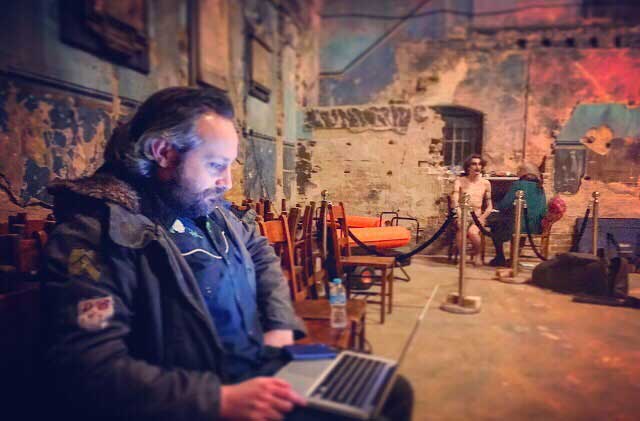
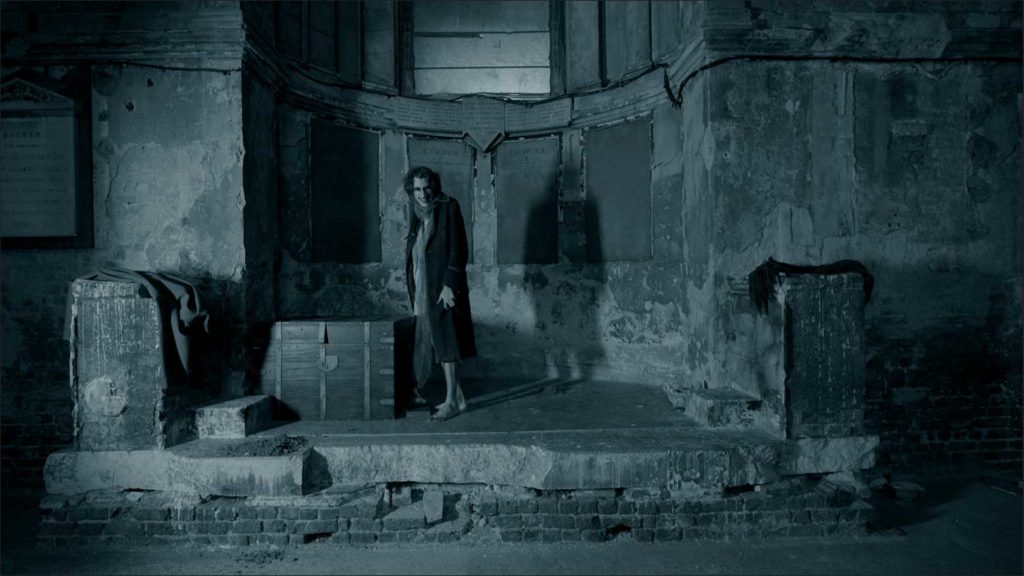
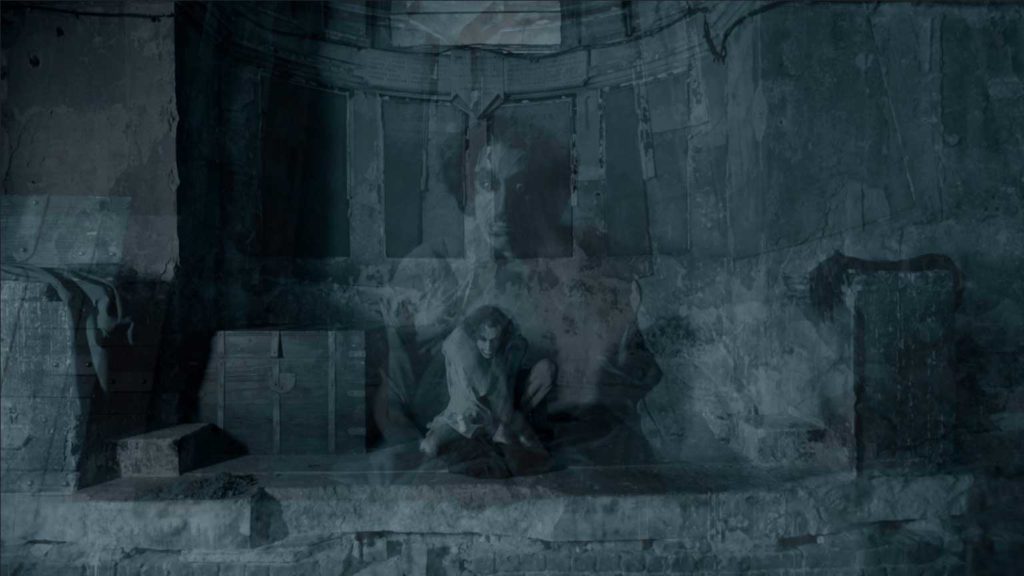
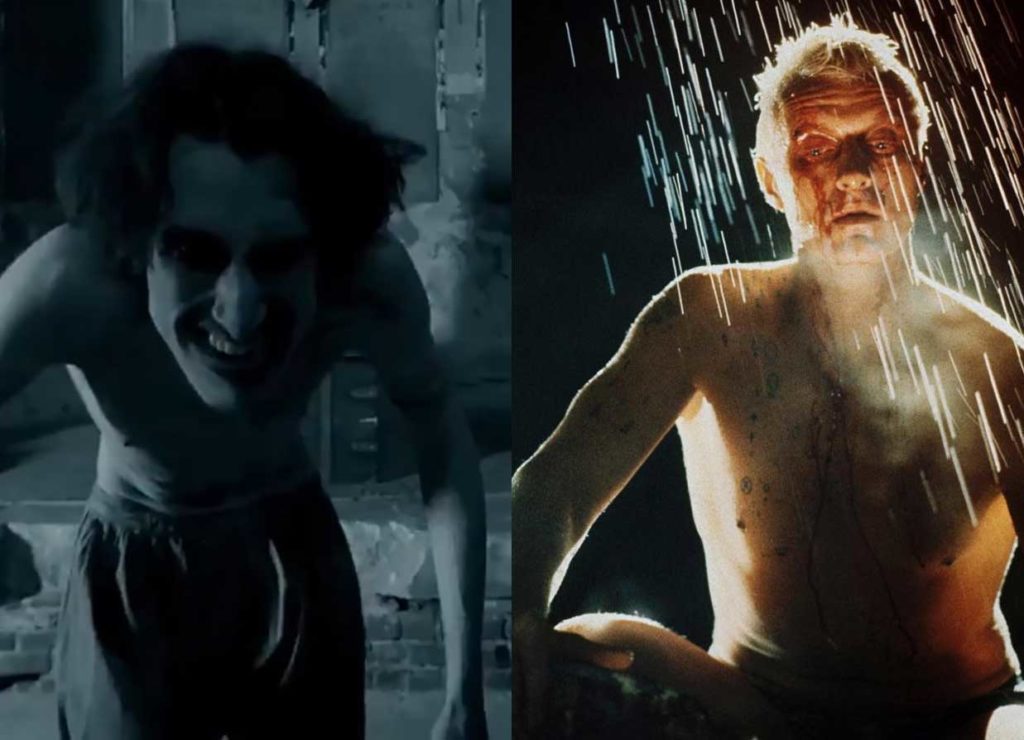
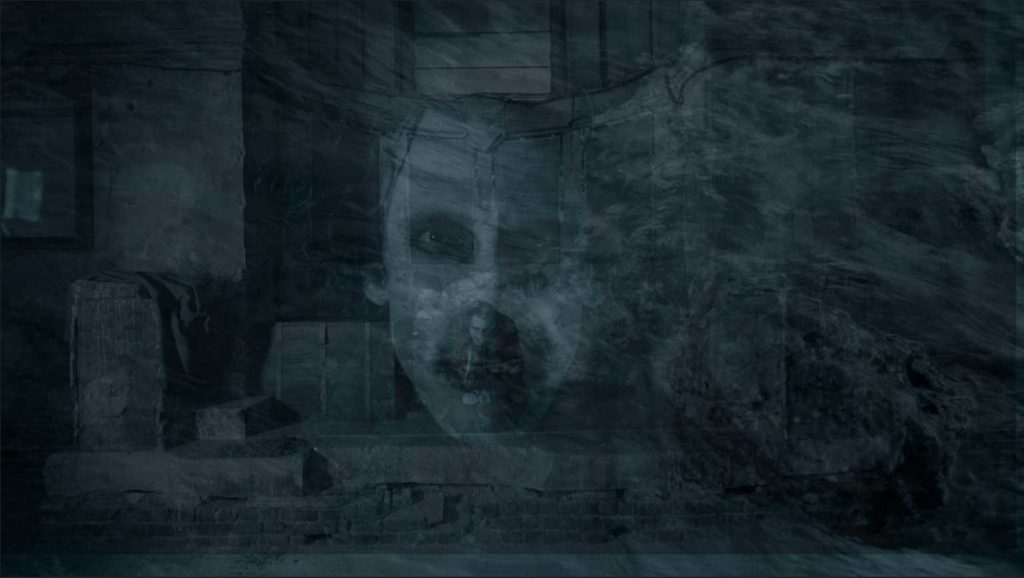
Pingback: Frankenstein’s Creature - Sam Ashurst's debut movie gives Shelley's famous monster new life